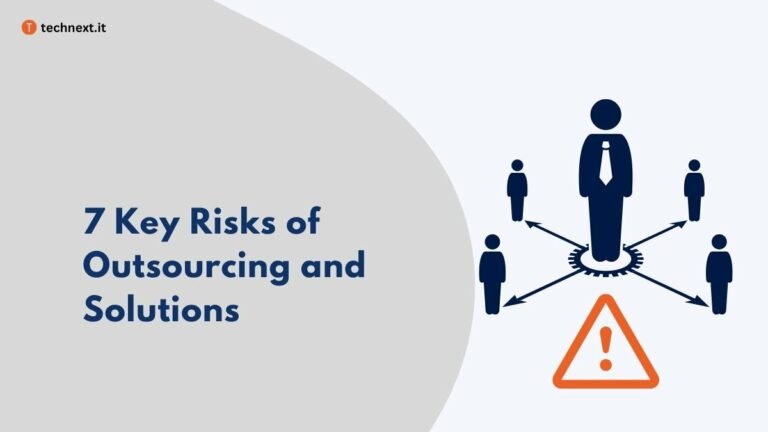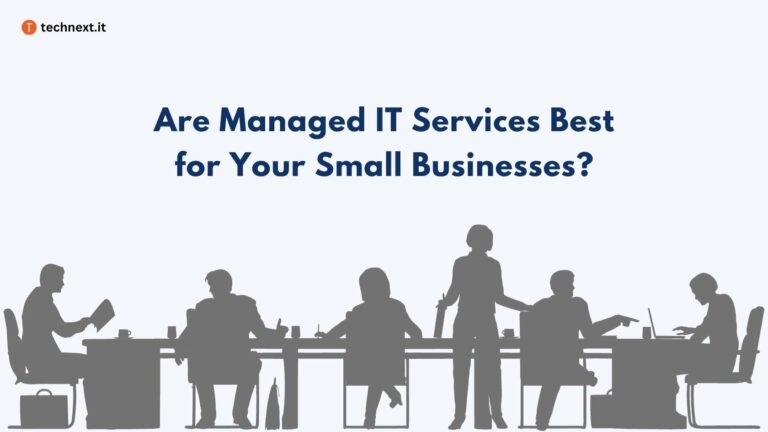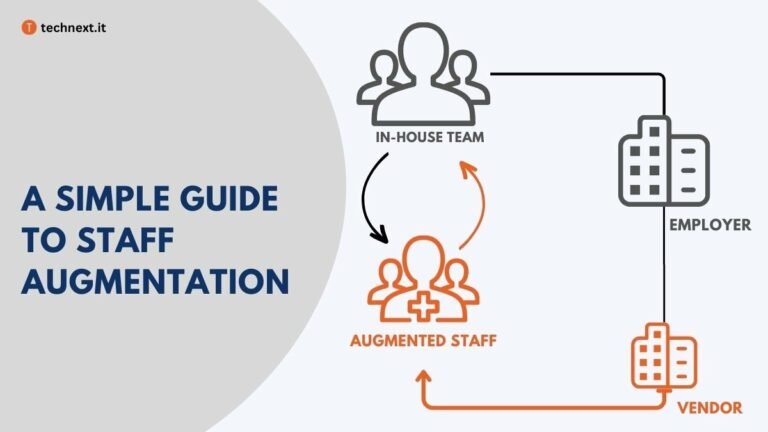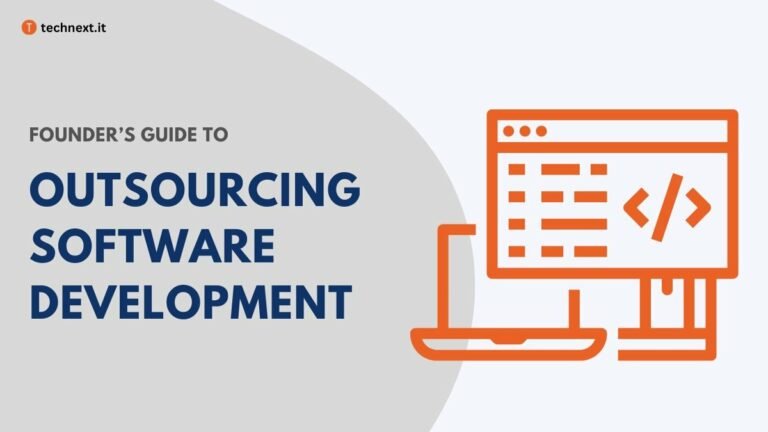Exploring Small Business IT Outsourcing: Why, When, and How
In this article, I’ll discuss everything you need to know about small business IT outsourcing. Including when you should outsource your IT, what services you can outsource, and how to outsource your business IT services while avoiding risk.
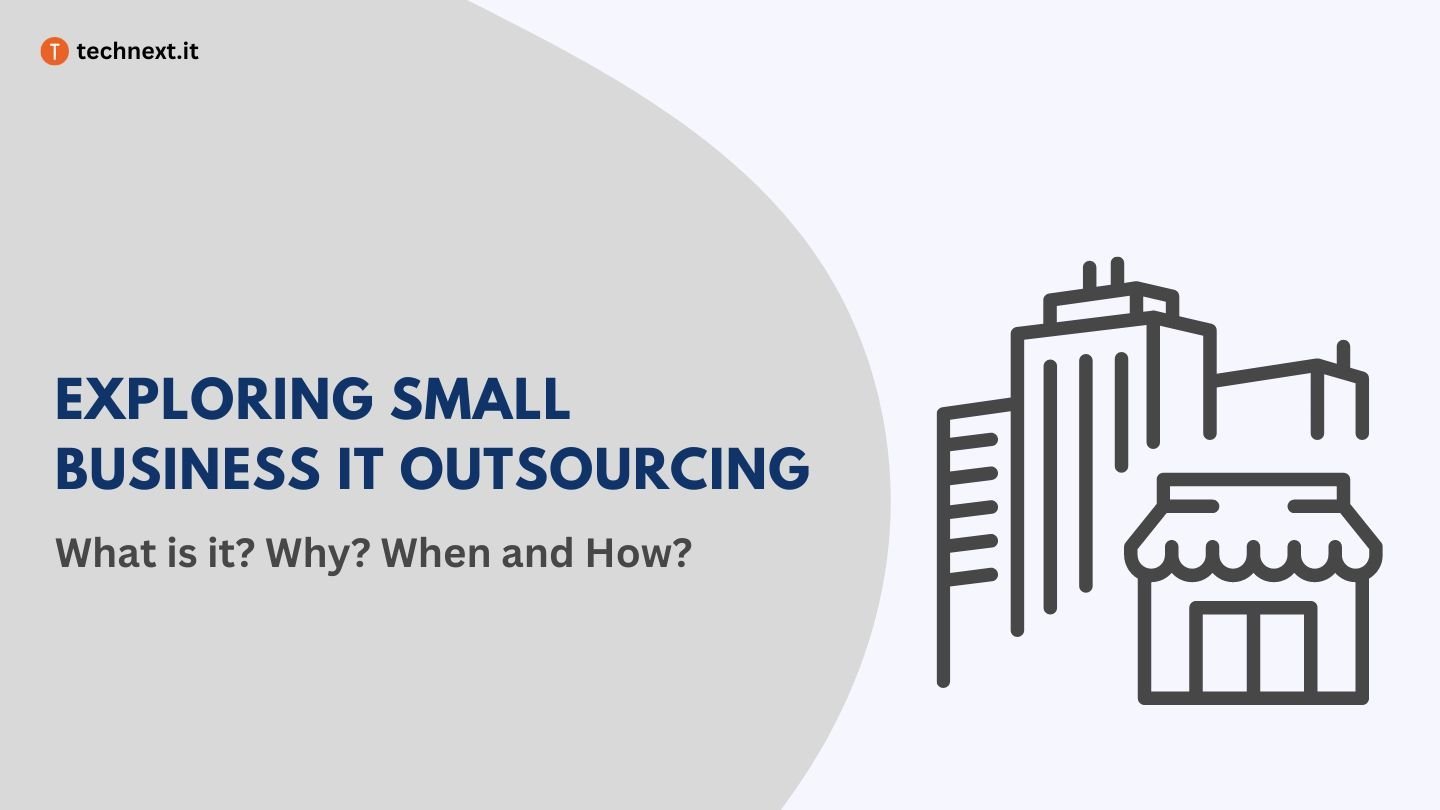
Small businesses are quite hesitant when it comes to outsourcing tasks to another company. As a small business owner, I know how hard it is to trust someone else with your bread and butter.
But the small business landscape is changing; Now, 65% of small businesses fail in the first 10 years. Only “Doing new things” can prevent you from failing and fulfill your dream of becoming a medium or large enterprise.
If you need to bring digital transformation to your business and don’t have enough resources to set up an in-house team, then “outsourcing it” is one of those new things you must do.
What is Small Business IT Outsourcing?
“Small business IT outsourcing, also known as SMB IT outsourcing, refers to the practice of outsourcing various information technology (IT) functions and services to third-party service providers by small businesses.”
Did you get bored with the textbook definition? Let me explain this in simple English and with a story.
A few months ago, I received an email from the CEO of a marketing company in Texas (say his name is Tom). They are one of the top digital marketing companies in their City, if not the state.
Their growing popularity and service demand put them into sweet trouble. Maintaining the service quality and the same level of customer satisfaction was becoming hard for them.
The CEO was tech-savvy and knew that using a CRM could solve his problem. The bigger problem was that no existing CRM software offered the features he needed, and decided to build his own.
He could hire developers to build the CRM in-house, but it would kill his significant amount of time and resources. instead, he hired Technext to construct the custom CRM software and focused on growing his marketing business.
The process he followed to develop his software is termed as “outsourcing”, and as his company is a small business and they are taking IT services, it is categorized under small business IT outsourcing.
Why Outsourcing IT is Good for Small Businesses
1. Professional services
Many entrepreneurs believe that it is better to take care of everything themselves. However, IT project management requires specific knowledge, training, and resources.
If you don’t have them, it’s better to outsource the IT task to someone who knows the deal and can execute them effectively. That’s why smart business leaders choose to outsource and pay instead of handling everything.
2. Save time
Time is limited, and small businesses have to do a lot of other things besides working with
customers, making sales, and making money.
You can spend your useful time on more important tasks, like giving the best customer service and improving your return on investment (ROI); instead of spending time on things like working on your website, try finding database errors.
3. Better results
Small business outsourcing allows for hiring specialists for specific tasks without sacrificing quality. By outsourcing to more qualified parties, small business owners can achieve better results.
4. Cost-effective
Recruiting individuals is costly. Companies must not only pay payroll taxes and benefits, but they must also invest in recruiting and interviewing people. Typically, businesses must pay considerably for recruitment and training.
Other hidden costs must be considered. You will be able to use someone else’s knowledge without breaking the bank or incurring excessive overhead expenditures.
5. Efficient and flexible
When you outsource a task, you have access to workers who are knowledgeable about that field. For instance, a third-party development firm can create your website more effectively than you could with the time and resources you have available.
Plus, you can take services on demand. You only pay for their services when you require them; you don’t need to recruit someone or invest in training.
What IT Services Can You Outsource?
Information Technology is a broad term, and a small business may have a wide variety of IT needs. As most IT services do not require physical presence, you can outsource the lion’s share of your IT needs.
Here are the most common IT needs small businesses outsource to third-party vendors.
Software Development: Developing custom software or applications tailored to the business’s needs.
Network Management: Managing and maintaining computer networks, servers, and internet connectivity.
Help Desk and Technical Support: Providing assistance to employees or customers with IT-related issues.
Data Backup and Recovery: Ensuring data is regularly backed up and can be recovered in case of data loss.
Cybersecurity: Implementing security measures to protect against cyber threats and data breaches.
Cloud Services: Managing and optimizing cloud-based services like data storage and software applications.
Hardware Procurement: Advising on and sourcing IT hardware, such as computers and servers.
When should you outsource IT for small businesses?
The right time to outsource varies depending on a business’s specific needs and circumstances. Because it is a strategic move that can substantially impact a company’s efficiency, productivity, and bottom line. The best moment to outsource depends on a variety of factors and considerations.
Businesses generally consider outsourcing when they are having difficulty handling specific jobs or procedures internally. This could be due to a lack of experience, excessive costs, or insufficient resources to manage specific operations successfully.
Outsourcing can also give much-needed scalability when a firm is experiencing significant growth and struggles to keep up with rising demands.
Furthermore, outsourcing becomes a viable option if a corporation wants to focus on its core capabilities while delegating non-essential duties to external experts. Before outsourcing, it is critical to carefully consider the potential benefits, hazards, and long-term ramifications.
Companies can easily obtain a competitive advantage in the dynamic market landscape by aligning the decision with business objectives and thoroughly reviewing cost-effectiveness and the capabilities of possible outsourcing partners.
How to Outsource IT and Grow Small Business
Outsourcing any part of your business is not an easy task by any means, but it’s quite a straightforward process. Outsourcing IT services has it’s own shortcomings and risks, but you can minimize them if you take your steps carefully. Here are the steps you can follow to minimize the risk and ensure a better outcome.
Step 1: Figure out your needs and goals
The first thing you need to identify is what your needs are and the goal of your digital transformation. Take Tom’s example; his goal was to manage his client base better using a CRM.
Figure out what problems you want to solve and how IT can help you solve them. Do a brief SWAT analysis to evaluate your business strengths and weaknesses thoroughly.
Collaborate with an IT professional to help you better understand the needs. Having a CTO helps a lot, but most small businesses do not have one. In such cases, consider hiring a fractional CTO or adviser to help you.
Step 2: Determine what to outsource
The second thing you need to do is identify the appropriate tasks or functions to outsource:
Identify Tasks – Create a comprehensive list of tasks or functions that are potential candidates for outsourcing.
Prioritize: Assess which tasks are most important to your business. These are the areas where you should concentrate your outsourcing efforts, focusing on high-impact operations.
Step 3: Research and find service provers and take quotations
After you have your requirement list, it’s time to search and find the best outsourcing service provider. Although thousands of companies provide such services, finding a reliable one is still hard.
Here’s what you can do to find out the best ones:
- Search based on the services you need. Let’s say you want to develop a software solution and then find a team specializing in that service.
- Don’t hesitate to request references and case studies to gauge the quality of their work. It’s also wise to explore online reviews and ratings.
If you find a service provider reliable, talk to the contact person about your project. Then, ask for a quotation. Make a list of providers so that you can compare while deciding.
Here is a basic table for the outsourcing service provider list:
| Service Provider | Years in Business | Number of Employees | Pricing Structure | Price Quotation ($) |
| Technext | 11 | 50+ | Hourly Rate, Project-Based | $10,000 |
| Provider A | 8 | 150 | Hourly Rate, Project-Based | $30,000 |
| Provider B | 10 | 45 | Monthly Retainer, Hourly | $30,000 |
| Provider C | 5 | 75 | Fixed Price, Hourly | $30,000 |
| Provider D | 12 | 90 | Project-Based, Retainer | $30,000 |
| Provider E | 7 | 200 | Per Record, Hourly | $30,000 |
You can collect and add more variables like portfolio, contact person, country, etc. Feel free to copy and modify the table.
We also have a detailed template. Download the template from here: DOWNLOAD LINK
Step 4: Compare cost, and quality and choose the top 3
A big faux pas founders make when choosing vendors is going for the most affordable option. Well, saving cost is and always will be one prime objective of outsourcing, but as a business owner, your main goal is to get the best service.
So, you should keep a balance between the cost and quality. But how?
Estimate costs: Calculate the costs required for outsourcing, taking into account not only the service provider’s fees but also any additional expenses like software or tools. Do this for all your chosen outsourcing vendors.
Compare quotes and quality of work: After collecting quotes from various vendors, conduct a thorough comparison of their offerings in terms of cost, quality, and response time.
Find out the best deal for you: From the cost and quality comparison, you will get a top view of each vendor. Make a list of the top 3 or 5 outsourcing service providers.
Step 5: Discuss! Discuss! Discuss!
The outsourcing market is saturated; there are thousands of loopholes and pitfalls. So, how can avoid them? The answer is obvious, through discussion and preventive measures. Here are a few things you must discuss before starting to work with an outsourcing agency:
Scope of Work (SOW):
- Clearly define the scope of the project, including specific tasks, deliverables, and objectives.
- Discuss any possible changes or additions to the scope and how they will be handled.
Timelines and Deadlines:
- Agree on project timelines, milestones, and deadlines.
- Discuss the flexibility for adjusting timelines in case of unforeseen circumstances.
Communication Protocols:
- Define how communication will occur, including preferred channels (email, phone, project management tools).
- Set expectations for response times and availability.
Reporting and Feedback:
- Determine how progress will be reported, including regular status updates and reporting formats.
- Discuss feedback mechanisms for both parties to provide input and make improvements.
Quality Assurance:
- Specify quality control measures and how quality will be monitored and maintained.
- Outline the process for revisions and corrections if deliverables do not meet quality standards.
Change Management:
- Discuss how changes to the project, scope, or objectives will be managed and approved.
- Establish a change request process.
Legal and Compliance Issues:
- Ensure that both parties understand and comply with all relevant laws and regulations.
- Discuss liability and indemnification clauses.
Intellectual Property and Data:
- Clearly define ownership and usage rights of intellectual property and data.
- Ensure data security and confidentiality measures are in place.
Review and Approval Processes:
- Establish workflows for project reviews, approvals, and sign-offs.
- Specify who has the authority to make decisions.
Step 6: Ask for a free trial
The discussion will give you an overview of the outsourcing company, but you won’t get to know the people who will do the work. It is important to know the people who will write the codes or make the calls for you. Request a free trial to be able to work directly with them.
Most reputable companies offer a free trial. For example, Technext offers a 7-day free trial for you to get to know the people behind you and their quality of work.
Step 7: Sign the contract and start the partnership
You’ve done everything from finding potential candidates to working on the free trial. It’s time for you to start the partnership.
But before that, you must sign a contract highlighting all the factors you have discussed.
Disputes can occur anytime; this contract will protect you from future losses. And if the company is registered in the US, UK, or EU, you can take it to court for fraud or breach of contract.
Have Any Questions? Let’s Talk
Reading articles doesn’t always provide the full picture, but talking to an expert does. And like I said, outsourcing is a big deal for any small business, so if you still have any questions, I invite you to a 30-minute meeting.
I am one of the co-founders of Technext, and I have been helping startups and small businesses since 2012, so I think I can give you a satisfactory answer to your questions.


